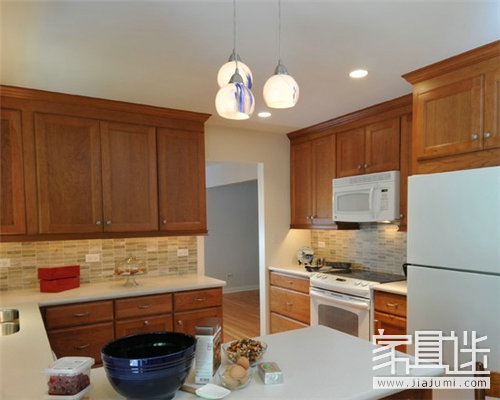Teach you to buy cabinets
Before purchasing cabinets for your home renovation, it's essential to prepare thoroughly to ensure you make the best choice. Cabinet enthusiasts will guide you through key considerations when buying cabinets.

First, Prepare Before Buying Cabinets
1. Set a realistic cabinet budget. Your budget should cover several aspects: the cost of the cabinets themselves, the countertop and electrical setup for the kitchen, and any additional hardware options. While it’s natural to want the most beautiful kitchen possible, it’s important to balance your dreams with your financial reality. Be clear about your total budget and avoid inflating it when discussing with designers or sales representatives, as this can waste time and lead to unnecessary costs.
2. Measure your kitchen space accurately. Having a detailed plan of your kitchen layout helps you evaluate the quality of the cabinet company’s design team and gives you a clearer idea of pricing. This also helps you avoid making decisions based solely on the aesthetics of the cabinets. When drawing up the layout, be precise—mark the positions of doors, windows, plumbing lines, gas pipes, heating systems, and outlets.
3. Gather information for your designer. During your discussions with the designer, share as much detail as possible about your kitchen and household needs. Be honest and specific about the following: the condition of your house, the state of your current kitchen, the number of people in your family, your cooking habits, and the style you prefer. This ensures that the designer can create a solution tailored to your lifestyle.
Second, Pay Attention to Key Aspects of Cabinets
1. Understand the basic material configuration of each cabinet. At present, the cabinet market is still developing, so the quality largely depends on the materials and craftsmanship. Important features like installation methods are often hidden but crucial. These elements affect the stability during installation, the ability to adjust the cabinet’s alignment, and its long-term durability. A good installation method should become the industry standard.
2. Check the quality details. Look closely at the edges of cabinet doors, the firmness of the structure, how panels connect, and the smoothness of door and drawer movements. Ensure all gaps are even and consistent across the entire unit.
3. Understand the ordering process and after-sales service. For large purchases like cabinets, it's vital to know the terms of the contract and the company’s after-sales support. Ask for a sample contract and review the after-sales service policy before placing an order. A reliable company should have clear, reasonable terms and strong customer support.
4. Review the quotation carefully. Pay attention to what is included in the standard package and what is optional. If possible, request a detailed list of optional items and understand how the pricing works. Avoid vague explanations from sales guides and ask for clarity before finalizing your decision. Protect your interests by being informed and patient.
5. Evaluate the professionalism of the design team. Cabinets require a coordinated effort from trained professionals. A skilled designer can create a functional and stylish kitchen based on your needs. On the other hand, an untrained or inexperienced designer may cause more problems than solutions. Discuss your floor plan with the designer and sales representative before making a decision to ensure their advice is practical and professional.
Related reading: Custom cabinet design and quality judgment methods

Third, Gain Basic Knowledge About Cabinets
1. Read articles and magazines related to cabinets. There is a wealth of online information about different brands and styles.
2. Visit friends and family who have installed cabinets. Hearing about their experiences and seeing the actual results can help you make a better decision.
3. Tour building supply stores and brand showrooms. These places offer a wide range of options and allow you to interact with sales representatives. You’ll gain valuable insight and get a real sense of the products available.
4. Explore brand-specific information. This allows you to stay updated on the latest trends and color choices in cabinet design.
Fourth, Decide on the Style and Color of Your Cabinets
Several factors influence the style of your cabinets, including patterns, overall design, and color choices. It's important to consider these elements together and ensure they harmonize with the rest of your kitchen. The layout of your kitchen usually depends on the space available. A narrow kitchen often follows a “one†shape, which is small and requires a simple yet functional cabinet design. Focus on creating a storage area, preparation zone, and cooking area according to your workflow. To maximize storage, pay attention to the internal design and place less-used items in the back of the cabinets.
Silicone Kitchenware,Silicone Spatula,Airtight Food Container,Airtight Storage Containers
DONGGUAN BILLION GOODTOP INDUSTRIAL CO., LTD , https://www.bgoodtop.com